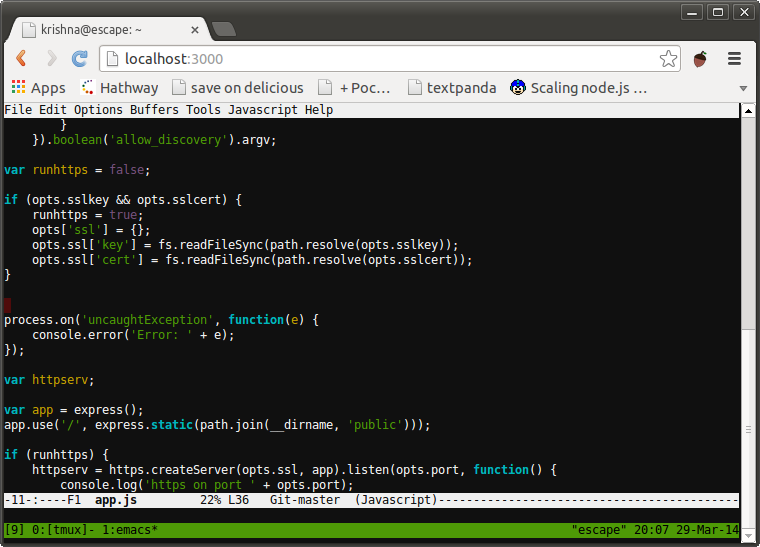|
|
12 years ago | |
|---|---|---|
| public | 12 years ago | |
| LICENSE | 12 years ago | |
| README.md | 12 years ago | |
| app.js | 12 years ago | |
| package.json | 12 years ago | |
| terminal.png | 12 years ago | |
README.md
Wetty = Web + tty
Terminal over http. Wetty is an alternative to ajaxterm/anyterm but much better than them because wetty uses ChromeOS' terminal emulator (hterm) which is a full fledged implementation of terminal emulation written entirely in Javascript. Also it uses websockets instead of Ajax and hence better response time.
hterm source - https://chromium.googlesource.com/apps/libapps/+/master/hterm/
Install
-
git clone https://github.com/krishnasrinivas/wetty -
cd wetty -
npm install
Run on http:
node app.js -p 3000
If you run it as root it will launch /bin/login (where you can specify the username), else it will launch ssh to localhost and you can specify the sshport using --sshport option and specify username in address bar like this:
https://yourserver:3000/wetty/ssh/<username>
Run on https:
Always use https! If you don't have ssl certificates from CA you can create a self signed certificate using this command:
openssl req -x509 -newkey rsa:2048 -keyout key.pem -out cert.pem -days 30000 -nodes
And then run:
node app.js --sslkey key.pem --sslcert cert.pem -p 3000
Run wetty behind nginx:
Put the following config in nginx's conf:
location /wetty {
proxy_pass http://127.0.0.1:3000/wetty;
proxy_http_version 1.1;
proxy_set_header Upgrade $http_upgrade;
proxy_set_header Connection "upgrade";
proxy_read_timeout 43200000;
proxy_set_header X-Real-IP $remote_addr;
proxy_set_header X-Forwarded-For $proxy_add_x_forwarded_for;
proxy_set_header Host $http_host;
proxy_set_header X-NginX-Proxy true;
}
In the browser you have to use: 'http://yourserver.com/wetty' if you are running as root else 'http://yourserver.com/wetty/ssh/'. Note that if your nginx is configured for https you should run wetty without ssl.
Issues
Does not work on Firefox as hterm was written for ChromeOS. So works well on Chrome.
